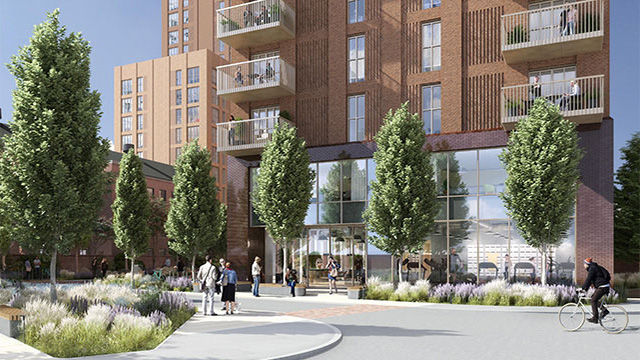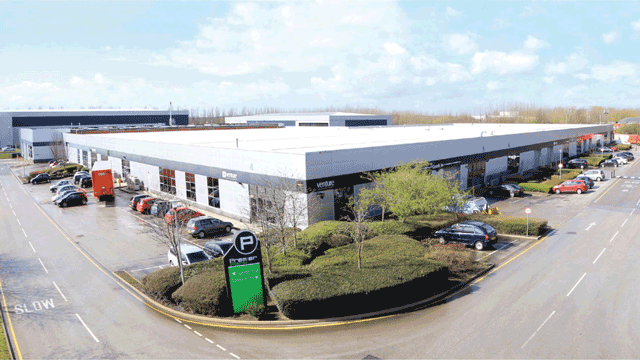by Warwick Cox
Following a recent revaluation, the property portfolio of the BP Pension Fund was estimated at a figure close to £1bn. This represents very nearly 25% of the total assets of the fund and the Berkeley Square Estate accounts for about a third of this total. The portfolio also includes the Knightsbridge Estate, which comprises all the shops between Harrods and Harvey Nichols in Knightsbridge, and the recently completed 139,000-sq ft air-conditioned office building in King William Street in the City. On the basis of the valuation, more than 80% of the portfolio is located in central London and the Berkeley Square Estate is the jewel in the crown.
The bulk of the estate was acquired for just £6m in 1967, which was a time when few pension funds held any property investments. A further important block in Bruton Street was purchased in 1974. The whole estate is about 30 acres of prime freehold Mayfair land and includes properties in Hill Street, Charles Street and Bruton Street, with the mews and streets in between. The BP Pension Fund own Berkeley Square itself and lease it to Westminster City Council.
Over the years, the BP Pension Fund have maintained an active programme of improvement as and when opportunities arise. Normally the refubishment of office accommodation has been carried out directly by the trust, while much of the residential upgrading work has been done by the lessees on building agreements prior to the granting of the lease.
In these cases the developer agrees to carry out a programme of works in accordance with an agreed specification. The right to occupy the premises on a short-term basis is conferred under the agreement and the purchaser normally acquires his interest in return for a payment of 20% of the purchase price. The balance is then paid on completion of the building works and the long-term lease granted.
Over the years this method of granting long-term interests has given the trust an element of control in the refurbishment. This is in preference to granting a lease straight to the developer where the standard of redevelopment might not be to the highest level. From our experience it is clear that the standard of works carried out, and the quality of fittings used in refurbishments and redevelopments, must be of the highest standard to attract and retain the best names as tenants at premium rents. The result of our insistence of nothing but the best has ensured that the Berkeley Square Estate has continually outperformed the main property performance indices.
One of our more pressing problems has been the temporary office use of buildings on the estate. The uncertainties created by these uses has had a depressing effect on the valuation of individual properties within the Berkeley Square portfolio.
Towards the end of the second world war, and immediately afterwards, residential property in and around the West End was requistioned and pressed into service as offices. The intention was to relieve pressure for office accommodation following bomb damage to buildings in the City of London. Houses and blocks of flats in central London had remained unoccupied for a number of years because the tenants had wisely evacuated themselves and their families from the risk of being bombed.
Under emergency arrangements, Westminster City Council granted temporary office consent to a variety of buildings and this soubriquet has continued since. For a number of years it has been the council’s firm intention to terminate the category by which property was occupied for this use and Westminster concluded that these consents should not be extended any further. The pension fund took this decision very seriously; through their managing agents, Debenham Tewson & Chinnocks, they started discussions with the officers in the planning department. The culmination of the discussions with the city council was a multiple planning application which covered the affected properties. The acceptability of such an application was tested when the pension fund relinquished an office use at 22 Charles Street so that the building became a totally residential property.
The trust then transferred this planning use to 22 Hill Street, previously occupied by the Ladbroke Club, which had been badly damaged by fire in 1979. Planning approval was subsequently obtained, establishing the principle of a single application covering properties which were not contiguous. After prolonged discussions, the application was lodged and the planning committee invited representatives of the fund and its managing agents to make a presentation to explain the pension scheme’s position.
After further consideration the committee decided last May that approval should be given for a package of planning consents whereby about 50% of the affected properties revert to residential occupation after December 1990 and the remainder continue in permanent office use after this date. This arrangement is backed up by a section 52 agreement which specifies areas and time-limits for the residential conversions. Detailed planning applications have to be submitted within nine months of the overall planning consent and the pension fund is already commissioning plans to implement its commitment under this agreement. An early opportunity has occurred as a result of the action claimed to be the responsibility of the Sons of Glendower, who fire-bombed 9 Hill Street, the residential agency department of Strutt & Parker. This attack occurred on the night of November 26-27 1988. It is unlikely that the agents will reoccupy the building before the lease ends and the likelihood is that the premises will once more have a residential occupier.
Following the successful refurbishment of a number of properties on the estate, the covenants of the tenants occupying the buildings suggest that the quality of the portfolio can be maintained. Polly Peck and Citibank occupy premises in Berkeley Square, while Spicer & Oppenheim have located themselves in brand new accommodation in Bruton Street. Occupiers of recently refurbished space in Hill Street include Sibec, Lawson Mardon and Scanbank.
During recent years the trustees have become increasingly concerned about the damage caused to the square before, during and after the annual Berkeley Square Ball. Even now the damage caused in July 1988 has not been rectified. It is no surprise to the pension fund that local tenants, both residential and commercial, in and around the square are concerned about the damage and disruption. Press coverage of the scenes on the evening hardly endears the event to the non-partisan observer either.










